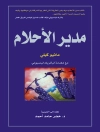In-depth agility evaluation for a more efficient response to
change
Assessing Organization Agility provides a clear, concise
roadmap to improved implementation of change. Written by two
organizational researchers at USC’s Center for Effective
Organizations and a management consultant with Strategy&
(formerly Booz & Company), this book provides the means for
assessing an organization’s agility and formulating an improvement
plan. Beginning with a discussion about the meaning of ’agility, ’
the authors enumerate the various contributing factors that affect
how quickly an organization responds to change, and the efficiency
of the response. An agility survey shows readers how their own
organization compares in terms of both perception and
implementation, allowing the formulation of an ’Agility Profile’
that can point out strengths while highlighting areas in need of
improvement. Case studies demonstrate the real-world impact of
effective agility strategy, and example scenarios illustrate
improved responses by each agility ’type.’
Eighty percent of large-scale organizations fail to meet their
objectives, and poor agility is often to blame. Organizations
respond to changes in the marketplace, economy, and society by
implementing changes in their processes and procedures, but
planning and implementing change takes time. During that time, the
context of the initial decision frequently evolves, leaving the
organization one step behind. Agility is the ability to quickly
implement change without sacrificing strategy, and Assessing
Organization Agility helps readers to:
* Discover the organizational/operational factors that contribute
to agility
* Assess current agility from all perspectives, highlighting
areas for improvement
* Implement processes and procedures that streamline change
events
* Maintain forward trajectory with adjustments to strategy and
implementation
The current pace of technical, competitive, and environmental
change is faster than ever before, and response requirements are
far more complex and sophisticated. In this turbulent environment,
agility can mean the difference between success and stagnation.
Assessing Organization Agility asks the questions and
provides the answers that lead to better organizational reflex and
more effective response.
Om författaren
Christopher Worley is Senior Research Scientist at USC’s Center for Effective Organizations where he focuses on strategy formulation and implementation, organization design, and the longitudinal evaluation of strategic change. He is also Associate Professor of Business Strategy at Pepperdine University’s Graziadio School of Business and Management. His research and consulting clients include organizations in technology (Microsoft, Intel, Nokia, Capital One); health care and insurance (Healthways, St. Joseph Health Care System; Hartford Financial Services); the public sector (State of California, Canadian Broadcasting Company, Southern California Edison, City of Los Angeles, City of Carlsbad) and chemicals and natural resources (British Petroleum, Dow Chemical, Magma Copper Company, Canadian Hunter Exploration, Ltd.) He is the author of two books and many articles and has made several presentations to scholarly societies such as the Academy of Management, the Strategic Planning Forum, and the Conference Boards of the U.S. and Canada.
Thomas Williams is Vice President and Senior Executive Advisor at Booz & Company where he manages consulting engagements for ’Fortune 500’ clients globally, specializing in strategy, organization, management systems, and product development for energy and industrial companies.
Edward E. Lawler III is director of the Center for Effective Organizations at the University of Southern California (USC) and distinguished professor of management and organization in the USC Marshall School of Business. Named one of the country’s leading management experts by Business Week magazine, he is the author or coauthor of more than thirty books including 10 from Jossey-Bass. His writings have appeared in the Harvard Business Review, Fortune, and the Financial Times, as well as many academic journals.












